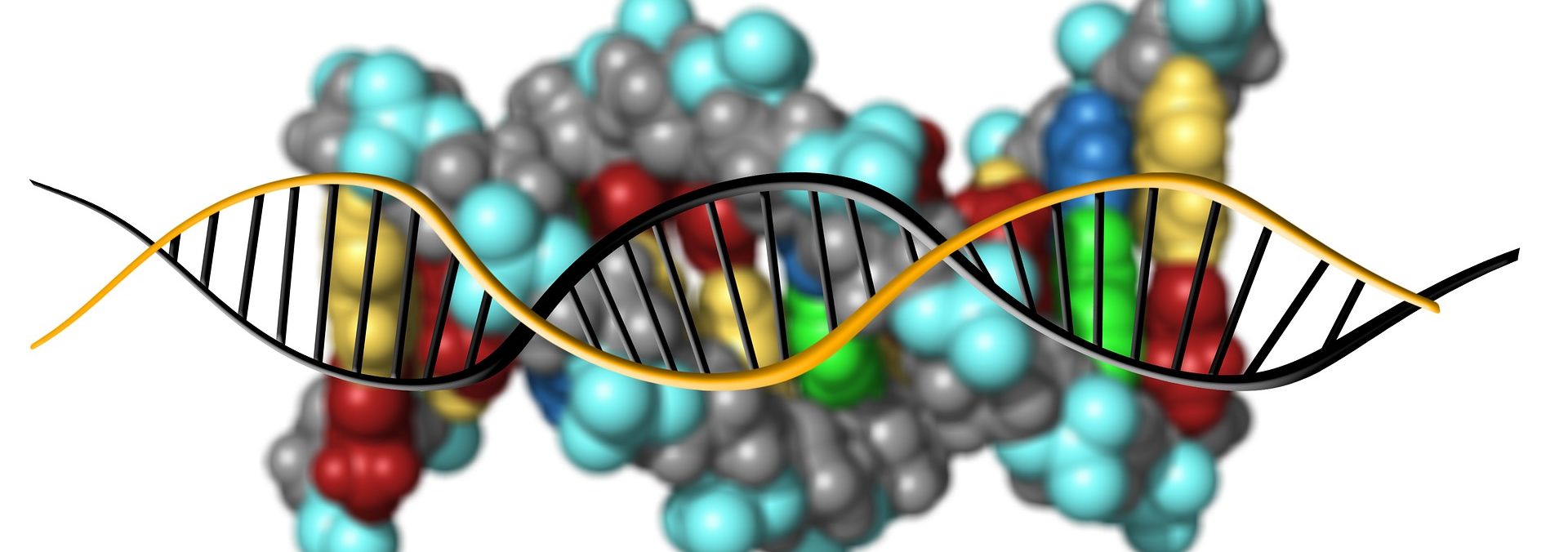Pathology Testing: talking about health + Down syndrome with Gabi Giacomin
Far from the one-size-fits-all approach to health of the past, Gabi explains how there are now a number of genetic and biochemical pathology tests that can be used to monitor the health of people with Down syndrome and then treat according to the unique needs of that person. This is the fourth and last post in our series of four Monday Health Talks with Gabi. If you’d like to read the first post on Optimum Diet, you can click here. The second post on Complementary and Alternative Medicines and Therapies is here, and the third post on Nutritional Intervention is here. Thanks so much to Gabi for sharing her knowledge on Health and Down syndrome in October! x

Due to recent scientific discoveries we can now test for specific areas of genetic weakness. Despite this great opportunity, its potential remains untapped for a variety of reasons; people are fearful of finding out their genetic weaknesses especially if no known cure exists. Focusing on genetics with knowledge of how to modulate gene expression can be extremely beneficial, especially for those with complex genetic causes such as those with Down syndrome (DS).
Even well-intentioned integrative practitioners tend to overlook the reality of genetic individuality in children with DS and prescribe the same program for each one of them.This approach fails to consider why some people react well to a given substance, while others don’t.
In Down syndrome, a number of biological systems are out of balance simultaneously, which can manifest in ill health. Disease stems from underlying genetic susceptibility combined with assaults from environmental stressors and infectious agents.
Knowledge of your child’s genetics, including mutations, can give you information to make informed decisions on how to supplement and overcome genetic weaknesses. Biochemical testing is then used to monitor your child’s progress during supplementation.
This approach takes into account individual uniqueness and avoids the one-size-fits-all approach to health. It looks at genetic weaknesses as well as the role played by toxins and microbes in developing a program to keep your child healthy.

Genetic Testing
In undertaking genetic testing, the goal is to identify which genes along the pathway have SNP’s (single nucleotide polymorphisms) or changes in DNA structure. Once the molecular pathways affected by SNP’s are known, practitioners use combinations of foods and nutrients to regulate these mutations and restore proper pathway function.
While there are a number of genetic tests available on the market, most of them look at isolated genes in a wide range of pathways. Focusing on a particular metabolic pathway in the body, such as the Methylation Pathway, allows us to improve overall health. The Methylation Pathway is a central pathway unique and critical for children with DS. Mutations in this pathway lay the foundations for assault by toxic agents and microbes, resulting in a wide range of conditions which often affect people with Down syndrome.
Following is a brief description of some of the genes included in a Methylation Pathway Genetic Panel and their relevance to DS:
COMT – (catechol-O-methyltransferase) The primary function of this gene is to help break down Dopamine. Dopamine is a neurotransmitter that is recognised for its role in attention, language, as well as reward seeking behaviour. COMT activity is about 40% higher in children with DS compared to normal controls.
VDR – (Vitamin D receptor) VDR mutations can lead to a variety of characteristics associated with people with DS. A higher frequency of the B allele (bb genotype) resulted in taller and longer living (BB genotype) people with DS.
BHMT – (betaine homocysteine methyltransferase) This enzyme is crucial for supplying a ‘shortcut’ through the methylation cycle, helping to convert homocysteine to methionine. The activity of this enzyme can be affected by stress and cortical levels. Children with DS have increased levels of BHMT and benefit from betaine (TMG) supplementation to keep this portion of the methylation cycle functioning properly.
AHCY – (s adenosylhomocysteine hydrolase)(SAH) This is the enzyme that converts SAH to adenosine and homocysteine. Decreased levels of AHCY, as in children with DS, lead to lower levels of homocysteine. It is important for those with AHCY mutations to monitor amino acid levels in order to balance the effects of these mutations. Biochemical tests to monitor levels of SAMe and SAH may also be useful.
CBS – (cystathionine-beta-synthase) The CBS enzyme acts as a gate between homocysteine and the downstream portion of the pathway that generates ammonia. People with DS have an over expression of the CBS enzyme depleting support added for the methylation pathway, including B12. High CBS activity tends to produce high levels of Taurine when methylation support is in place.
SHMT – (serine hydroxymethyltransferase) this gene product tends to shift the emphasis of the methylation cycle towards the building blocks needed for new DNA synthesis and away from the processing of homocysteine to methionine. Polymorphisms of this gene, which occur in DS, can result in altered concentrations of folate and methylmalonic acid (MMA) affecting folate/homocysteine metabolism.

Biochemical Testing
Genetic tests are something you will only run once in your lifetime. Biochemical testing is something you can run routinely to check that the supplementation you are using is actually making a difference. Biochemical testing looks at the amount or activity of a particular enzyme or protein from a sample of blood, urine, stool, saliva or hair.
Urine Amino Acid (UAA) tests give you information about the building blocks for proteins in your system. UAA tests can help you see if you are making progress with supplementing the methylation cycle as well as a sense of overall nutrient absorption. UAA tests measure homocysteine, which is associated with a range of health imbalances as well as methionine, taurine and phospholipids which are all indicators of methylation cycle support.
Urine Essential Elements and Toxic Elements Tests (UTM/UEE) give you a picture of toxins being excreted from your system as well as the level of critical minerals in your body. Toxic metal excretion is important to monitor as it can impair methylation. Cobalt levels on a UEE test is a measure of B12 levels.
Hair Mineral Tests (HMT) give additional information about toxic and essential mineral levels. HMT are particularly useful at measuring lithium levels, which need to be followed closely when adding Vitamin B12 to the program.
Metabolic Analysis Profile (MAP) testing gives information about breakdown products of neurotransmitters such as dopamine and serotonin as well as critical energy function. Mitochondrial issues, which MAP testing assesses, are becoming more important in health issues such as DS.
Comprehensive Stool Analysis Tests (CDSA) can give an indication of the bacterial and yeast load in the intestinal tract.
If you haven’t run a genetic test, you can still use biochemical tests to give you a sense of the success of your treatment. These tests are currently available through Nutripath and Healthscope Pathology Testing in Australia or Holistic Health in the US.
Ideally parents should familiarise themselves with these tests and discuss them with a practitioner. The science of reading genetic and biochemical tests is complex and should be gradually learned. Finding a practitioner who specialises in assessing genetic and biochemical test results and who also has a knowledge of DS biochemistry will be your best support for this approach to treatment.
Bibliography
Obeid R, Hartmuth K, Herrmann W, Gortner L, Rohrer TR, Geisel J, Reed MC, Nijhout HF. Blood biomarkers of methylation in Down syndrome and metabolic simulations using a mathematical model. Mol Nutr Food Res. 2012 Oct;56(10):1582-9.
Marta Pogribna, Stepan Melnyk, Igor Pogribny, Abalo Chango, Ping Yi, and S. Jill James. Homocysteine Metabolism in Children with Down Syndrome: In Vitro Modulation. Am J Hum Genet. 2001 Jul; 69(1): 88–95.
Mendes CC1, Raimundo AM, Oliveira LD, Zampieri BL, Marucci GH, Biselli JM, Goloni-Bertollo EM, Eberlin MN, Haddad R, Riccio MF, Vannucchi H, Carvalho VM, Pavarino ÉC. DHFR 19-bp deletion and SHMT C1420T polymorphisms and metabolite concentrations of the folate pathway in individuals with Down syndrome. Genet Test Mol Biomarkers. 2013 Apr;17(4):274-7.
Aras, O et al. Influence of 699C–>T and 1080C–> polymorphisms of the cystathionine B-synthase gene on plasma homocysteine levels. Clinical Genetics, December 2000; 53(6):455.
Yasko, A. (2009) Autism: Pathways to Recovery. Neurological Research Institute, Bethel Maine!
Yasko, A. A guide to Nutrigenomic Testing. Genetic Profiling Systems LLC. 2008
Yasko, A. Methylation pathway Analysis. 2014 Neurological Research Institute, Bethel Maine!
Eva Lana-Elola, Sheona D. Watson-Scales, Elizabeth M. C. Fisher, and Victor L. J. Tybulewicz.
Down syndrome: searching for the genetic culprits. Dis Model Mech. 2011 Sep; 4(5): 586–595.
Antonarakis, S. E. et al. Chromosome 21 and Down syndrome: from genomics to pathophysiology. Nature Reviews Genetics 5, 725-738 (2004)
